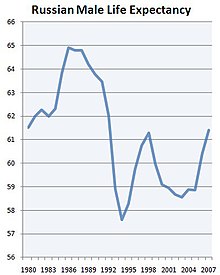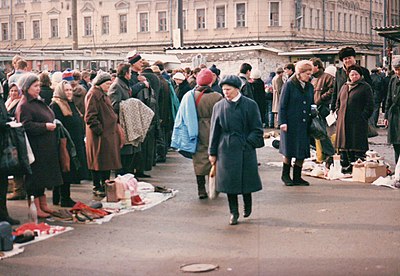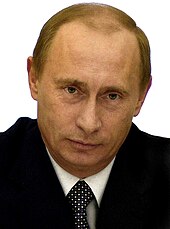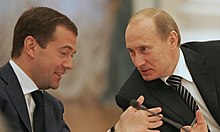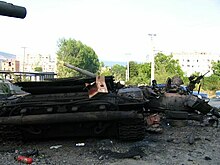From Wikipedia, the free encyclopedia
https://en.wikipedia.org/wiki/History_of_Russia_(1991%E2%80%93present)
Russian Federation Российская Федерация |
|---|
|
|
Anthem:
Патриотическая песня
Patrioticheskaya pesnya
"The Patriotic Song"
(1991–2000)
Государственный гимн Российской Федерации
Gosudarstvennyy gimn Rossiyskoy Federatsii
"State Anthem of the Russian Federation"
(2000–present) |
![Russian territory since 2014 on the globe, with unrecognised territory shown in light green.[a]](https://upload.wikimedia.org/wikipedia/commons/thumb/5/5e/Russian_Federation_%28orthographic_projection%29_-_only_Crimea_disputed.svg/250px-Russian_Federation_%28orthographic_projection%29_-_only_Crimea_disputed.svg.png) Russian territory since 2014 on the globe, with unrecognised territory shown in light green. |
| Capital and largest city | Moscow
 55°45′N 37°37′E 55°45′N 37°37′E |
|---|
Official language
and national language | Russian |
|---|
| Recognised national languages | See Languages of Russia |
|---|
| Ethnic groups (2010) | |
|---|
| Religion (2017) | |
|---|
| Demonym(s) | Russian |
|---|
| Government | Federal socialist republic
(1991–1993)
Federal semi-presidential constitutional republic
(1993–present) |
|---|
| President | |
|---|
|
• 1991–1999 | Boris Yeltsin |
|---|
• 1999–2008 | Vladimir Putin |
|---|
• 2008–2012 | Dmitry Medvedev |
|---|
• 2012–present | Vladimir Putin |
|---|
| Prime Minister | |
|---|
|
• 1991–1992 | Boris Yeltsin (first) |
|---|
• 2020–present | Mikhail Mishustin (current) |
|---|
| Legislature | Supreme Soviet
(1991–1993)
Federal Assembly
(1993–present) |
|---|
| Soviet of Nationalities
(1991–1993)
Federation Council
(1993–present) |
|---|
| Soviet of the Republic
(1991–1993)
State Duma
(1993–present) |
|---|
|
|
| 12 June 1990 |
|---|
| 23 August 1991 |
|---|
• Renamed | 26 December 1991 |
|---|
| 26 December 1991 |
|---|
| 12 December 1993 |
|---|
| 8 December 1999 |
|---|
| 18 March 2014 |
|---|
| 4 July 2020 |
|---|
|
• Total | 17,098,246 km2 (6,601,670 sq mi)
17,125,200 km2 (including Crimea) (1st) |
|---|
• Water (%) | 13 (including swamps) |
|---|
|
• 2022 estimate |
 145,478,097 145,478,097- (including Crimea)
 143,054,637 143,054,637- (excluding Crimea)
(9th) |
|---|
• Density | 8.4/km2 (21.8/sq mi) (181st) |
|---|
| GDP (PPP) | 2021 estimate |
|---|
• Total |  $4.365 trillion (6th) $4.365 trillion (6th) |
|---|
• Per capita |  $30,013 (55th) $30,013 (55th) |
|---|
| GDP (nominal) | 2021 estimate |
|---|
• Total |  $1.829 trillion (11th) $1.829 trillion (11th) |
|---|
• Per capita |  $12,575 (64th) $12,575 (64th) |
|---|
| Gini (2018) |  36.0 36.0
medium · 98th |
|---|
| HDI (2019) |  0.824 0.824
very high · 52nd |
|---|
| Currency | Russian ruble (₽) (RUB) |
|---|
| Time zone | UTC+2 to +12 |
|---|
| Driving side | right |
|---|
| Calling code | +7 |
|---|
| ISO 3166 code | RU |
|---|
| Internet TLD | |
|---|
|
|
The modern history of Russia began with the Russian Republic of the Soviet Union gaining more political and economical autonomy amidst the imminent dissolution of the USSR during 1990–1991, proclaiming its sovereignty inside the Union in June 1990, and electing its first President Boris Yeltsin
a year later. The Russian SFSR was the largest republic within the
Soviet Union, but it had no significant independence before, being the
only Soviet republic to not have its own branch of the Communist Party.
The RSFSR was the largest of the fifteen republics that made up the USSR, accounting for over 60% of the GDP and over 50% of the Soviet population. Russians also dominated the Soviet military and the Communist Party. As such, the Russian Federation was widely accepted as the USSR's successor state in diplomatic affairs and it assumed the USSR's permanent membership and veto in the UN Security Council (see Russia and the United Nations).
Prior to the dissolution of the USSR, Yeltsin had been elected President of the RSFSR in June 1991 in the first direct presidential election in Russian history.
This ensured that he would be the political leader of the Russian
successor state following dissolution. This situation resulted in
political turmoil as the Soviet and Russian leadership wrestled for
control, which culminated in the 1991 August coup, where the Soviet military attempted to overthrow Mikhail Gorbachev.
Although the coup was ultimately averted, this situation contributed to
rising instability in the Soviet Union. As the USSR was on the verge of
collapse by October 1991, Yeltsin announced that Russia would proceed
with radical reforms, including market-oriented reform along the lines of Poland's "big bang", also known as "shock therapy". Following Yeltsin's resignation in 1999, Russia's politics have since been dominated by Vladimir Putin,
serving as either President or Prime Minister. Although the Russian
economy has improved significantly under Putin's leadership following
relative economic chaos under Yeltsin, Putin has also been widely
accused of corruption, authoritarian leadership, and widespread human rights abuses.
For the most part, the Russian armed forces
were in near complete disarray by 1992, one year after dissolution.
This degraded military effectiveness would become all too clear during
the 1994 Chechen War,
but in the interim this posed some significant practical challenges for
global security and arms control. Under Russian leadership, the Lisbon Protocol ensured that former Soviet republics
would disarm themselves of nuclear weapons. This may have been
particularly important for Kazakhstan which hosted a significant share
of the world's nuclear weapons immediately following the dissolution of
the Soviet Union.
However, the former Soviet republics were able to maintain
transnational cooperation in other military areas, like establishing
shared responsibility for the rocket and space infrastructure such as
the Baikonur Cosmodrome.
Reforms
"Shock therapy"
Russian male life expectancy from 1980 to 2007
With the dissolution of the Warsaw Pact and CoMEcon
and other treaties that served to bind its satellite states to the
Soviet Union, the conversion of the world's largest state-controlled
economy into a market-oriented economy would have been extraordinarily
difficult regardless of the policies chosen. The policies chosen for
this transition were (1) liberalization, (2) stabilization and (3) privatization. These policies were based on the Washington Consensus of the International Monetary Fund (IMF), World Bank and Treasury Department.
On January 2, 1992, Yeltsin—acting as his own prime
minister—enacted the most comprehensive components of economic reform by
decree, thereby circumventing the Supreme Soviet of Russia and Congress of People's Deputies of Russia, which had been elected in March 1990,
before the dissolution of the USSR. While this spared Yeltsin from the
prospects of bargaining and wrangling with Soviet deputies, it also
eliminated any meaningful discussion of the right course of action for
the country.
The programs of liberalization and stabilization were designed by Yeltsin's deputy prime minister Yegor Gaidar, a liberal economist inclined toward radical reform, and widely known as an advocate of "shock therapy". Shock therapy was originally used in Bolivia by notable economist Jeffery Sachs to combat inflation in the 1980s.
Having achieved some major successes in Bolivia, shock therapy was then
imported to the Polish context following the dissolution of the Soviet
Union, and Russia shortly after.
The partial results of liberalization (lifting price controls) included worsening already apparent hyperinflation, initially due to monetary overhang and exacerbated after the central bank,
an organ under parliament, which was skeptical of Yeltsin's reforms,
was short of revenue and printed money to finance its debt. This
resulted in the near bankruptcy of much of Russian industry.
The process of liberalization would create winners and losers,
depending on how particular industries, classes, age groups, ethnic
groups, regions, and other sectors of Russian society were positioned.
Some would benefit by the opening of competition; others would suffer.
Among the winners were the new class of entrepreneurs and black
marketeers that had emerged under Mikhail Gorbachev's perestroika.
But liberalizing prices meant that the elderly and others on fixed
incomes would suffer a severe drop in living standards, and people would
see a lifetime of savings wiped out.
With inflation at double-digit rates per month as a result of
printing, macroeconomic stabilization was enacted to curb this trend.
Stabilization, also called structural adjustment, is a harsh austerity
regime (tight monetary policy and fiscal policy)
for the economy in which the government seeks to control inflation.
Under the stabilization program, the government let most prices float,
raised interest rates
to record highs, raised heavy new taxes, sharply cut back on government
subsidies to industry and construction, and made massive cuts in state
welfare spending. These policies caused widespread hardship as many
state enterprises found themselves without orders or financing. A deep credit crunch shut down many industries and brought about a protracted depression.
The rationale of the program was to squeeze the built-in
inflationary pressure out of the economy so that producers would begin
making sensible decisions about production, pricing and investment
instead of chronically overusing resources—a problem that resulted in
shortages of consumer goods in the Soviet Union
in the 1980s. By letting the market rather than central planners
determine prices, product mixes, output levels, and the like, the
reformers intended to create an incentive structure in the economy where
efficiency and risk would be rewarded and waste and carelessness were
punished. Removing the causes of chronic inflation,
the reform architects argued, was a precondition for all other reforms:
Hyperinflation would wreck both democracy and economic progress, they
argued; they also argued that only by stabilizing the state budget could
the government proceed to dismantle the Soviet planned economy and create a new capitalist Russia.
Nonetheless, radical reform continued to face some critical political barriers. The Central Bank
was still subordinate to the conservative Supreme Soviet who continued
to support socialist policies in opposition to Yeltsin and the
presidency. During the height of hyperinflation
in 1992–1993, the Central Bank actually tried to derail reforms by
actively printing even more money during this period of inflation. After
all, the Russian government was short of revenue and was forced to
print money to finance its debt. As a result, inflation exploded into
hyperinflation, and the Russian economy continued into an evermore
serious slump.
Privatization
Upon the Soviet Union's collapse, the new Russian government was
forced to manage the huge state enterprise sector inherited from the Soviet economy. Privatization was carried out by the State Committee for State Property Management of the Russian Federation under Anatoly Chubais
with the primary goal being to transform the formerly state-owned
enterprises into profit-seeking businesses, which would not be dependent
on government subsidies for their survival. To distribute property
quickly and to win over popular support, the reformers decided to rely
mostly on the mechanism of free voucher privatization, which was earlier implemented in Czechoslovakia.
The Russian government believed that the open sale of state-owned
assets, as opposed to the voucher program, would have likely resulted in
the further concentration of ownership among the Russian mafia and the nomenklatura, which they sought to avoid. Nevertheless, contrary to the government's expectations, insiders
managed to acquire control over most of the assets, which remained
largely dependent on government support for years to come. From 1992 to
1994, ownership of 15,000 firms was transferred from state control via
the voucher program.
Privatization of the oil sector was regulated by presidential decree
No.1403 approved on November 17, 1992. Vertically integrated companies
were created by joining some oil-producing enterprises and refineries
into open-stock companies. Starting in 1994 many former state oil
companies were privatized. This privatization had been partial because
the federal government had obtained ownership positions in several
companies and had also retained full control over the transport of oil
to lucrative world markets.
In 1995, facing severe fiscal deficit and in desperate need of funds for the 1996 presidential elections, the government of Boris Yeltsin adopted a "loans-for-share" scheme proposed by banker Vladimir Potanin and endorsed by Anatoly Chubais, then a deputy prime minister, whereby some of the largest state industrial assets (including state-owned shares in Norilsk Nickel, Yukos, Lukoil, Sibneft, Surgutneftegas, Novolipetsk Steel, and Mechel) were leased through auctions for money lent by commercial banks to the government. The auctions were rigged
and lacked competition, being largely controlled by favored insiders
with political connections or used for the benefit of the commercial
banks themselves.
As neither the loans nor the leased enterprises were returned in time,
this effectively became a form of selling, or privatizing, state assets
at very low prices.
The privatization facilitated the transfer of significant wealth to a relatively small group of business oligarchs and New Russians, particularly natural gas and oil executives.
Obstacles to reform
The
former Soviet Union had to deal with a number of unique obstacles
during the post-Soviet transition including political reform, economic
restructuring and the redrawing of political boundaries. The discomfort
associated with these changes was not felt the same in each former
Soviet republic. As a general rule, states to Russia's west, such as Poland, Hungary, and the Czech Republic,
have fared slightly better than their eastern neighbors since the
collapse of the Eastern bloc, while Russia itself and countries to
Russia's east experienced greater difficulties and found themselves on
worse footing immediately after dissolution. A major reason that
Russia's transition has been so wrenching is that it is remaking both
its Soviet-era political and economic institutions at once. In addition
to institutional reforms designed to create a new political-economic
system, Russia was also charged with remaking itself into a new national
state following the disintegration of the Soviet Union.
The first major problem facing Russia was the legacy of the Soviet Union's enormous commitment to the Cold War.
In the late 1980s, the Soviet Union devoted a quarter of its gross
economic output to the defense sector (at the time most Western analysts
believed that this figure was 15 percent).
At the time, the military-industrial complex employed at least one of
every five adults in the Soviet Union. In some regions of Russia, at
least half of the workforce was employed in defense plants (the
comparable U.S. figures were roughly one-sixteenth of gross national
product and about one of every sixteen in the workforce). These
over-reliance on the military sector made Russian industry and human
capital relatively noncompetitive upon entry into a market-oriented
system. Furthermore, the end of the Cold War and the cutback in military
spending affected industry quite dramatically making it difficult to
quickly retool equipment, retrain workers, and find new markets. In the
process of economic re-tooling, an enormous body of experience,
qualified specialists and know-how was lost or misallocated, as the
plants were sometimes switching from, for example, producing hi-tech
military equipment to making kitchen utensils.
A second obstacle, partly related to the sheer vastness and
geographical diversity of the Russian landmass, was the sizable number
of "mono-industrial" regional economies (regions dominated by a single
industrial employer) that Russia inherited from the Soviet Union. The
concentration of production in a relatively small number of big state
enterprises meant that many local governments were entirely dependent on
the economic health of a single employer; when the Soviet Union
collapsed and the economic ties between Soviet republics and even
regions were severed, the production in the whole country dropped by
more than fifty percent. Roughly half of Russia's cities had only one
large industrial enterprise, and three fourths had no more than four. Consequently, the decrease in production caused tremendous unemployment and underemployment.
Thirdly, post-Soviet Russia did not inherit a system of state
social security and welfare from the USSR. Instead the companies, mainly
large industrial firms, were traditionally responsible for a broad
range of social welfare functions—building and maintaining housing for
their work forces, and managing health, recreational, educational, and
similar facilities. The towns in contrast possessed neither the
apparatus nor the funds for the provision of basic social services.
Industrial employees were left heavily dependent on their firms. Thus,
economic transformation created severe problems in maintaining social
welfare since local governments were unable to assume finance or
operational responsibility for these functions.
Finally, there is a human capital dimension to the failure of post-Soviet reforms in Russia. The former Soviet population was not necessarily uneducated. Literacy
was nearly universal, and the educational level of the Soviet
population was among the highest in the world with respect to science,
engineering, and some technical disciplines, although the Soviets
devoted little to what would be described as "liberal arts" in the West.
With the move to a post-Communist system, the Russian university system
collapsed. Rampant credential inflation in the Russian university
system made it difficult for employers to determine who was really
skilled and the problems of the higher education system more generally
made it difficult to remedy other issues of human capital that came from
the transition to a market-oriented system, such as upskilling and
re-skilling.
For example, former state enterprise managers were highly skilled at
coping with the demands on them under the Soviet system of planned
production targets, but discouraged the risk-and-reward centered
behavior of market capitalism. These managers were responsible for a
broad array of social welfare functions for their employees, their
families, and the population of the towns and regions where they were
located. Profitability and efficiency, however, were generally not the most prominent priorities for Soviet enterprise managers. Thus, almost no Soviet employees or managers had firsthand experience with decision-making in the conditions of a market economy.
Depression
After the initial turmoil and euphoria of early marketizations,
Russia's economy sank into deep depression by the mid-1990s due to
botched reform efforts and low commodity prices globally but not before George H. W. Bush
helped Yeltsin with "an unparalleled opportunity to change the nuclear
posture of both the United States and the Soviet Union" and to end the Cold War peacefully with the Nunn–Lugar cash-for-weapons scheme, in order to avoid the worst of the dissolution of the vast Soviet technological empire.
Russia's economy was hit further by the financial crash of 1998 before
experiencing a modest recovery in 1999–2000 as commodity prices began to
rise again. According to Russian government statistics, the economic
decline was far more severe than the Great Depression was in the United States in terms of gross domestic product.
In 1995, a little over 3% of the work force was officially
registered as unemployed, but, in addition to the technically jobless,
4.4% of the labour force were working only part time, while a further
3.9% had been sent on involuntary leave. Also millions of Russians
turned up for work each day, but were not paid by the employers. If all
these categories of jobless, semi-employed and unpaid workers were taken
into account, the 18% Russian unemployment figure cited in June, 1995
by labour market expert Tatyana Maleva of the Institute of Economic
Analysis seemed real. With unemployment benefits sufficient only to buy a
small loaf of bread each day, trying to survive without some other
income was not an option for those who lost jobs. They were toiling
during the warmer months to grow food in family vegetable plots, selling
newspapers or lottery tickets on the streets, busking, begging, turning
to prostitution. Often they sank into the criminal underworld.
In 1997, at least 98,400 companies were defaulting on payments to
employees. It was estimated that one out of four Russian workers, or
close on 20 million people, were not paid for months. Some were paid "in
kind": for example, women workers were paid in brassieres and shoes
that they resoled in the streets, workers of Moskvich, the auto plant in Moscow, were paid in spare parts, those of the Ivanovo textile plants were paid in bedsheets, and those of the Gus-Khrustalny porcelain factory were paid in crystal and ceramic vases.
By way of a domestic comparison, the post-Soviet economic decline
was about half as severe as the economic catastrophe borne out of the
immediate consequence of World War I, the fall of Tsarism, and the Russian Civil War.
Russians protest the economic depression caused by the reforms with the banner saying: "Jail
the redhead!", 1998.
Following the economic collapse of the early 1990s, Russia suffered from a sharp increase in the rates of poverty and economic inequality. Estimates by the World Bank
based on both macroeconomic data and surveys of household incomes and
expenditures indicate that whereas 1.5% of the population was living in
poverty (defined as income below the equivalent of $25 per month) in the
late Soviet era, by mid-1993 between 39% and 49% of the population was
living in poverty. Per capita incomes fell by another 15% by 1998, according to government figures.
Public health indicators show a dramatic corresponding decline.
Although all post-Soviet countries experience an immediate decline in
birth-rates due to economic turmoil this may have been particularly
acute in Russia.
In 1999, total population fell by about three-quarters of a million
people. Meanwhile, life expectancy dropped for men from 64 years in 1990
to 57 years by 1994, while women's dropped from 74 to about 71. Both
health factors and a sharp increase in deaths of the youth demographic
from unnatural causes (such as murders, suicides, and accidents) have
significantly contributed to this trend. Closely related to the
declining life expectancy, alcohol-related deaths skyrocketed 60% in the
1990s and deaths from infectious and parasitic diseases shot up 100%, mainly because medicines were no longer affordable to the poor.
While the opening of the Russian market to imports in the early
1990s meant the nation no longer suffered from the supply shortages of
consumer goods that was often characteristic of the USSR (see Consumer goods in the Soviet Union),
the relative impoverishment of the Russian people during this time
meant only a limited number saw any significant benefit. Russians on
fixed incomes (the vast majority of the workforce) saw their purchasing
power drastically reduced, so while the stores might have been well
stocked in the Yeltsin era, average people could now afford to buy
little, if anything from these stores. By 2011, the average income has
risen to more than $700 per month,
emblematic of the mild recovery in recent years largely due to high oil
prices. The growing revenue, however, has not been evenly distributed. Social inequality has risen sharply since the 1990s with the Gini coefficient, for example, reaching 42% by the end of 2010. Russia's income disparities are now nearly as large as Brazil (which has long been a world leader in the area) while regional disparities in the level of poverty continue to trend upwards.
Backlash
Structural
reform and a severe devaluation of the ruble lowered the standard of
living for most segments of the Russian population. As a result, there
was powerful political opposition to reform. Democratization opened the
political channels for venting these frustrations, which translated into
votes for anti-reform candidates, especially those of the Communist Party of the Russian Federation and its allies in the Duma.
Russian voters, able to vote for opposition parties in the 1990s, often
rejected economic reforms and yearned for the stability and personal
security of the Soviet era. These were the groups that had enjoyed the
benefits of Soviet-era state-controlled wages and prices, high state
spending to subsidize priority sectors of the economy, protection from
competition with foreign industries, and welfare entitlement programs.
During the Yeltsin years in the 1990s, these anti-reformist groups were
well organized, voicing their opposition to reform through strong trade
unions, associations of directors of state-owned firms, and political
parties in the popularly elected parliament whose primary constituencies
were among those vulnerable to reform. A constant theme of Russian
history in the 1990s was the conflict between economic reformers and
those hostile to the new capitalism.
In the 1990s, former Soviet bureaucrats, factory directors,
aggressive businessmen and criminal organizations used insider deals,
bribery and simple brute force in order to grab lucrative assets, which
were previously state-owned. Russia's new "capitalists" spent millions
of dollars for protection. However, almost every business in Russia,
from curbside vendors to huge oil and gas companies, made payments to
the organized crime for protection ("krysha").
Businessmen said that they needed the "krysha" because the laws and the
court system were not functioning properly in Russia. The only way for
them to enforce a contract was to turn to a criminal "krysha". They also
used it to intimidate competitors, collect debts or take over new
markets. It was also increasingly common for businesses to turn to the
"red krysha"-corrupt police who ran protection rackets. Within this system, a sharp rise in contract killings developed.
Crisis
Constitutional crisis
The struggle for the center of power in Soviet Russia following the
collapse of the Soviet Union and for the nature of the economic reforms
culminated in a political crisis and bloodshed in the autumn of 1993.
Yeltsin, who represented a course of radical privatization, was opposed
by the Supreme Soviet. Confronted with opposition to the presidential
power of decree and threatened with impeachment, he "dissolved" the
parliament on September 21, in contravention of the existing
constitution, and ordered new elections and a referendum on a new
constitution. The parliament then declared Yeltsin deposed and appointed
Aleksandr Rutskoy
acting president on September 22. Tensions built quickly, and matters
came to a head after street riots on October 2–October 3. On October 4,
Yeltsin ordered Special Forces and elite army units to storm the parliament building, the "White House" as it is called. With tanks thrown against the small-arms fire of the parliamentary defenders, the outcome was not in doubt. Rutskoy, Ruslan Khasbulatov, and the other parliamentary supporters surrendered and were immediately arrested and jailed. The official count was 147 dead, 437 wounded (with several men killed and wounded on the presidential side).
Thus the transitional period in post-Soviet Russian politics came to
an end. A new constitution was approved by referendum in December 1993.
Russia was given a strongly presidential system. Radical privatization
went ahead. Although the old parliamentary leaders were released without
trial on February 26, 1994, they would not play an open role in
politics thereafter. Though its clashes with the executive would
eventually resume, the remodeled Russian parliament had greatly
circumscribed powers. (For details on the constitution passed in 1993 see Constitution and government structure of Russia.)
First Chechen War
A Russian
Mil Mi-8 helicopter brought down by Chechen insurgents near
Grozny in 1994
In 1994, Yeltsin dispatched 40,000 troops to the southern region of Chechnya to prevent its secession from Russia. Living 1,000 miles (1,600 km) south of Moscow, the predominantly Muslim Chechens for centuries had gloried in defying Russia. Dzhokhar Dudayev,
Chechnya's nationalist president, was driven to take his republic out
of the Russian Federation, declaring independence in 1991. Gripped by
the chaos of the Soviet Union's ongoing dissolution, Chechnya initially
operated as a de facto independent nation-though this status was never
recognized by Russia. In 1994, the Russian Armed Forces
invaded and quickly became submerged in a military quagmire. In January
1995, the Russian army and air force commenced a siege of the Chechen
capital of Grozny;
about 25,000 Chechen civilians died under week-long air raids and
artillery fire in the sealed-off city. Massive use of artillery and
air-strikes remained the dominating strategy throughout the Russian
campaign. Even so, Chechen forces seized thousands of Russian hostages,
while inflicting humiliating losses on the demoralized and ill-equipped
Russian troops.
The Russians finally managed to gain control of Grozny by
February 1995 after heavy fighting. In August 1996, Yeltsin agreed to a
ceasefire with Chechen leaders, and a peace treaty was formally signed
in May 1997. However, the conflict resumed in 1999, this time the
rebellion was crushed by Vladimir Putin.
Rise of the oligarchs
The new capitalist opportunities presented by the opening of the
Russian economy in the late 1980s and early 1990s affected many people's
interests. As the Soviet system was being dismantled, well-placed
bosses and technocrats in the Communist Party, KGB, and Komsomol
(Soviet Youth League) were cashing in on their Soviet-era power and
privileges. Some quietly liquidated the assets of their organization and
secreted the proceeds in overseas accounts and investments.
Others created banks and business in Russia, taking advantage of their
insider positions to win exclusive government contracts and licenses and
to acquire financial credits and supplies at artificially low,
state-subsidized prices in order to transact business at high,
market-value prices. Great fortunes were made almost overnight.
Between 1987 and 1992, trading of natural resources and foreign
currencies, as well as imports of highly demanded consumer goods and
then domestic production of their rudimentary substitutes, rapidly
enabled these pioneering entrepreneurs to accumulate considerable
wealth. In turn, the emerging cash-based, highly opaque markets provided
a breeding ground for a large number of racket gangs.
By the mid-1990s, the best-connected former nomenklatura
leaders accumulated considerable financial resources, while on the
other hand, the most successful entrepreneurs became acquainted with
government officials and public politicians. The privatization of state
enterprises was a unique opportunity because it gave many of those who
had gained wealth in the early 1990s a chance to convert it into shares
of privatized enterprises.
The Yeltsin government hoped to use privatization to spread
ownership of shares in former state enterprises as widely as possible to
create political support for his government and his reforms. The
government used a system of free vouchers as a way to give mass
privatization a jump-start. But it also allowed people to purchase
shares of stock in privatized enterprises with cash.
Even though initially each citizen received a voucher of equal face
value, within months most of the vouchers converged in the hands of
intermediaries who were ready to buy them for cash right away.
As the government ended the voucher privatization
phase and launched cash privatization, it devised a program that it
thought would simultaneously speed up privatization and yield the
government a much-needed infusion of cash for its operating needs. Under
the scheme, which quickly became known in the West as "loans for
shares," the Yeltsin regime auctioned off substantial packages of stock
shares in some of its most desirable enterprises, such as energy, telecommunications, and metallurgical firms, as collateral for bank loans.
In exchange for the loans, the state handed over assets worth
many times as much. Under the terms of the deals, if the Yeltsin
government did not repay the loans by September 1996, the lender
acquired title to the stock and could then resell it or take an equity
position in the enterprise. The first auctions
were held in the fall of 1995. The auctions themselves were usually
held in such a way so to limit the number of banks bidding for shares
and thus to keep the auction prices extremely low. By summer 1996, major
packages of shares in some of Russia's largest firms had been
transferred to a small number of major banks, thus allowing a handful of
powerful banks to acquire substantial ownership shares over major firms
at shockingly low prices. These deals were effectively giveaways of
valuable state assets to a few powerful, well-connected, and wealthy
financial groups.
The concentration of immense financial and industrial power,
which loans for shares had assisted, extended to the mass media. One of
the most prominent of the financial barons Boris Berezovsky, who controlled major stakes in several banks and companies, exerted an extensive influence over state television
programming for a while. Berezovsky and other ultra-wealthy,
well-connected tycoons who controlled these great empires of finance,
industry, energy, telecommunications, and media became known as the "Russian oligarchs". Along with Berezovsky, Mikhail Khodorkovsky, Roman Abramovich, Vladimir Potanin, Vladimir Bogdanov, Rem Viakhirev, Vagit Alekperov, Viktor Chernomyrdin, Viktor Vekselberg, and Mikhail Fridman emerged as Russia's most powerful and prominent oligarchs.
A tiny clique who used their connections built up during the last
days of the Soviet years to appropriate Russia's vast resources during
the rampant privatizations of the Yeltsin years, the oligarchs emerged
as the most hated men in the nation. The Western world generally
advocated a quick dismantling of the Soviet planned economy
to make way for "free-market reforms," but later expressed
disappointment over the newfound power and corruption of the
"oligarchs."
Presidential election of 1996
Campaigns
Early
in the campaign it had been thought that Yeltsin, who was in uncertain
health (after recuperating from a series of heart attacks) and whose
behavior was sometimes erratic, had little chance for reelection. When
campaigning opened at the beginning of 1996, Yeltsin's popularity was
close to zero. Meanwhile, the opposition Communist Party of the Russian Federation had already gained ground in parliamentary voting on December 17, 1995, and its candidate, Gennady Zyuganov,
had a strong grassroots organization, especially in the rural areas and
small towns, and appealed effectively to memories of the old days of
Soviet prestige on the international stage and the socialist domestic
order.
Panic struck the Yeltsin team when opinion polls suggested that
the ailing president could not win; members of his entourage urged him
to cancel presidential elections and effectively rule as dictator from
then on. Instead, Yeltsin changed his campaign team, assigning a key
role to his daughter, Tatyana Dyachenko, and appointing Anatoly Chubais campaign manager.
Chubais, who was not just Yeltsin's campaign manager but also the
architect of Russia's privatization program, set out to use his control
of the privatization program as the key instrument of Yeltsin's
reelection campaign.
The president's inner circle assumed that it had only a short
time in which to act on privatization; it, therefore, needed to take
steps that would have a large and immediate impact, making the reversal
of reform prohibitively costly for their opponents. Chubais' solution
was to co-opt potentially powerful interests, including enterprise
directors and regional officials, in order to ensure Yeltsin's
reelection.
The position of the enterprise directors to the program was
essential to maintaining economic and social stability in the country.
The managers represented one of the most powerful collective interests
in the country; it was the enterprise managers who could ensure that
labor did not erupt in a massive wave of strikes. The government,
therefore, did not strenuously resist the tendency for voucher
privatization to turn into "insider privatization," as it was termed, in
which senior enterprise officials acquired the largest proportion of
shares in privatized firms. Thus, Chubais allowed well-connected
employees to acquire majority stakes in the enterprises. This proved to
be the most widely used form of privatization in Russia. Three-quarters
of privatized enterprises opted for this method, most often using
vouchers. Real control thus wound up in the hands of the managers.
Support from the oligarchs was also crucial to Yeltsin's
reelection campaign. The "loans for shares" giveaway took place in the
run-up to the 1996 presidential election—at a point when it had appeared
that Zyuganov might defeat Yeltsin. Yeltsin and his entourage gave the
oligarchs an opportunity to scoop up some of Russia's most desirable
assets in return for their help in his reelection effort. The oligarchs,
in turn, reciprocated the favor.
In the spring of 1996, with Yeltsin's popularity at a low ebb,
Chubais and Yeltsin recruited a team of six leading Russian financiers
and media barons (all oligarchs) who bankrolled the Yeltsin campaign
with $3 million and guaranteed coverage on television and in leading
newspapers directly serving the president's campaign strategy. The media
painted a picture of a fateful choice for Russia, between Yeltsin and a
"return to totalitarianism." The oligarchs even played up the threat of
civil war if a Communist were elected president.
In the outlying regions of the country, the Yeltsin campaign
relied on its ties to other allies—the patron-client ties of the local
governors, most of whom had been appointed by the president.
The Zyuganov campaign had a strong grass-roots organization, but
it was simply no match for the financial resources and access to
patronage that the Yeltsin campaign could marshal.
Yeltsin campaigned energetically, dispelling concerns about his
health, exploiting all the advantages of incumbency to maintain a high
media profile. To assuage voters' discontent, he made the claim that he
would abandon some unpopular economic reforms and boost welfare
spending, end the war in Chechnya,
pay wage and pension arrears, and abolish military conscription (he did
not live up to his promises after the election, except for ending the
Chechen war, which was halted for 3 years). Yeltsin's campaign also got a
boost from the announcement of a $10 billion loan to the Russian
government from the International Monetary Fund.
Grigory Yavlinsky
was the liberal alternative to Yeltsin and Zyuganov. He appealed to a
well-educated middle class that saw Yeltsin as an incompetent alcoholic
and Zyuganov as a Soviet-era throwback. Seeing Yavlinsky as a threat,
Yeltsin's inner circle of supporters worked to bifurcate political
discourse, thus excluding a middle ground—and convince voters that only
Yeltsin could defeat the Communist "menace." The election became a
two-man race, and Zyuganov, who lacked Yeltsin's resources and financial
backing, watched helplessly as his strong initial lead was whittled
away.
Elections
Voter
turnout in the first round of the polling on June 16 was 69.8%.
According to returns announced on June 17, Yeltsin won 35% of the vote;
Zyuganov won 32%; Aleksandr Lebed, a populist ex-general, a surprisingly high 14.5%; liberal candidate Grigory Yavlinsky 7.4%; far-right nationalist Vladimir Zhirinovsky 5.8%; and former Soviet president Mikhail Gorbachev
0.5%. With no candidate securing an absolute majority, Yeltsin and
Zyuganov went into a second round of voting. In the meantime, Yeltsin
co-opted a large segment of the electorate by appointing Lebed to the
posts of national security adviser and secretary of the Security
Council.
In the end, Yeltsin's election tactics paid off. In the run-off
on July 3, with a turnout of 68.9%, Yeltsin won 53.8% of the vote and
Zyuganov 40.3%, with the rest (5.9%) voting "against all". Moscow and Saint Petersburg
(formerly Leningrad) together provided over half of the incumbent
president's support, but he also did well in large cities in the Urals
and in the north and northeast. Yeltsin lost to Zyuganov in Russia's
southern industrial heartland. The southern stretch of the country
became known as the "red belt", underscoring the resilience of the Communist Party in elections since the breakup of the Soviet Union.
Although Yeltsin promised that he would abandon his unpopular neoliberal
austerity policies and increase public spending to help those suffering
from the pain of capitalist reforms, within a month of his election,
Yeltsin issued a decree canceling almost all of these promises.
Right after the election, Yeltsin's physical health and mental
stability were increasingly precarious. Many of his executive functions
thus devolved upon a group of advisers (most of whom had close links
with the oligarchs).
Financial collapse
The global recession of 1998, which started with the Asian financial crisis
in July 1997, exacerbated Russia's continuing economic crisis. Given
the ensuing decline in world commodity prices, countries heavily
dependent on the export of raw materials such as oil were among those
most severely hit. Oil, natural gas, metals, and timber
account for more than 80% of Russian exports, leaving the country
vulnerable to swings in world prices. Oil is also a major source of
government tax revenue which brought significant negative implications
for Russia's fiscal situation, foreign exchange stores and ultimately,
the value of the ruble.
The pressures on the ruble, reflecting the weakness of the
economy, resulted in a disastrous fall in the value of the currency.
Massive tax evasion
continued and accelerated due to financial instability and decreasing
government capacity. This further decreased government revenues and
soon, the central government found itself unable to service the massive
loans it had accumulated and ultimately was even unable to pay its
employees. The government stopped making timely payment of wages,
pensions, and debts to suppliers; and when workers were paid, it was
often with bartered goods rather than rubles. Coal miners were especially hard hit, and for several weeks in the summer they blocked sections of the Trans-Siberian railroad
with protests, effectively cutting the country in two. As time wore on,
they added calls for the resignation of Yeltsin in addition to their
demands for wages.
A political crisis came to a head in March when Yeltsin suddenly
dismissed Prime Minister Viktor Chernomyrdin and his entire cabinet on
March 23. Yeltsin named a virtually unknown technocrat, Energy Minister Sergei Kiriyenko,
aged 35, as acting prime minister. Russian observers expressed doubts
about Kiriyenko's youth and inexperience. The Duma rejected his
nomination twice. Only after a month-long standoff, during which Yeltsin
threatened to dissolve the legislature, did the Duma confirm Kiriyenko
on a third vote on April 24.
Kiriyenko appointed a new cabinet strongly committed to stemming
the fall in the value of Russia's currency. The oligarchs strongly
supported Kiriyenko's efforts to maintain the exchange rate. A high
exchange rate meant that they needed fewer rubles to buy imported goods,
especially luxury items.
In an effort to prop up the currency and stem the flight of
capital, Kiriyenko hiked interest rates to 150% in order to attract
buyers for government bonds. But concerns about the financial crisis in
Asia and the slump in world oil prices were already prompting investors
to withdraw from Russia. By mid-1998, it was clear Russia would need
help from IMF to maintain its exchange rate.
The Russian crisis caused alarm in the West. Pouring more money
into the Russian economy would not be a long-term solution, but the U.S.
in particular feared that Yeltsin's government would not survive a
looming financial crisis without IMF help. U.S. President Bill Clinton's treasury secretary, Robert Rubin,
also feared that a Russian collapse could create a panic on world money
markets (and it indeed did help bring down one major US hedge fund Long-Term Capital Management). The IMF approved a $22.6 billion emergency loan on July 13.
Despite the bailout, Russia's monthly interest payments still
well exceeded its monthly tax revenues. Realizing that this situation
was unsustainable, investors continued to flee Russia despite the IMF
bailout. Weeks later the financial crisis resumed and the value of the
ruble resumed its fall, and the government fell into a self-perpetuating
trap. To pay off the interest on the loans it had taken, it needed to
raise still more cash, which it did through foreign borrowing. As
lenders became increasingly certain that the government could not make
good on its obligations, they demanded ever-higher interest rates,
deepening the trap. Ultimately the bubble burst.
On August 17, Kiriyenko's government and the central bank were
forced to suspend payment on Russia's foreign debt for 90 days,
restructure the nation's entire debt, and devalue the ruble. The ruble
went into free fall as Russians sought frantically to buy dollars.
Western creditors lost heavily, and a large part of Russia's fledgling
banking sector was destroyed, since many banks had substantial dollar
borrowings. Foreign investment rushed out of the country, and financial
crisis triggered an unprecedented flight of capital from Russia.
Political fallout
The
financial collapse produced a political crisis, as Yeltsin, with his
domestic support evaporating, had to contend with an emboldened
opposition in the parliament. A week later, on August 23, Yeltsin fired
Kiryenko and declared his intention of returning Chernomyrdin to office
as the country slipped deeper into economic turmoil.
Powerful business interests, fearing another round of reforms that
might cause leading concerns to fail, welcomed Kiriyenko's fall, as did
the Communists.
Yeltsin, who began to lose his hold as his health deteriorated,
wanted Chernomyrdin back, but the legislature refused to give its
approval. After the Duma rejected Chernomyrdin's candidacy twice,
Yeltsin, his power clearly on the wane, backed down. Instead, he
nominated Foreign Minister Yevgeny Primakov, who on September 11 was overwhelmingly approved by the Duma.
Primakov's appointment restored political stability because he
was seen as a compromise candidate able to heal the rifts between
Russia's quarreling interest groups. There was popular enthusiasm for
Primakov as well. Primakov promised to make the payment of wage and
pension arrears his government's first priority, and invited members of
the leading parliamentary factions into his Cabinet.
Communists and trade unionists staged a nationwide strike on
October 7, and called on President Yeltsin to resign. On October 9,
Russia, which was also suffering from a bad harvest, appealed for
international humanitarian aid, including food.
Recovery
Russia
bounced back from the August 1998 financial crash with surprising
speed. Much of the reason for the recovery is that world oil prices
rapidly rose during 1999–2000 (just as falling energy prices on the
world market had deepened Russia's financial troubles) so that Russia
ran a large trade surplus in 1999 and 2000. Another reason is that
domestic industries such as food processing have benefited from the
devaluation, which caused a steep increase in the prices of imported
goods.
Also, since Russia's economy was operating to such a large extent on
barter and other non-monetary instruments of exchange, the financial
collapse had far less of an impact on many producers than it would had
the economy been dependent on a banking system. Finally, the economy has
been helped by an infusion of cash; as enterprises were able to pay off
arrears in back wages and taxes, it, in turn, allowed consumer demand
for the goods and services of Russian industry to rise. For the first
time in many years, unemployment in 2000 fell as enterprises added
workers.
Nevertheless, the political and social equilibrium of the country remains tenuous to this day,
and power remains a highly personalized commodity. The economy remains
vulnerable to downturn if, for instance, world oil prices fall at a
dramatic pace.
Succession crisis
Yevgeny
Primakov did not remain in his post long. Yeltsin grew suspicious that
Primakov was gaining in strength and popularity and dismissed him in May
1999, after only eight months in office. Yeltsin then named Sergei Stepashin, who had formerly been head of the FSB (the successor agency to the KGB) and later been Interior Minister, to replace him. The Duma confirmed his appointment on the first ballot by a wide margin.
Stepashin's tenure was even shorter than Primakov's. In August
1999, Yeltsin once again abruptly dismissed the government and named Vladimir Putin
as his candidate to head the new government. Like Stepashin, Putin had a
background in the secret police, having made his career in the foreign
intelligence service and later as head of the FSB. Yeltsin went so far
as to declare that he saw Putin as his successor as president. The Duma
narrowly voted to confirm Putin.
When appointed, Putin was a relatively unknown politician, but he
quickly established himself both in public opinion and in Yeltsin's
estimation as a trusted head of government, largely due to the Second Chechen War. Just days after Yeltsin named Putin as a candidate for prime minister, Chechen forces engaged the Russian army in Dagestan, a Russian autonomy near Chechnya. In the next month, several hundred people died in apartment building bombings
in Moscow and other cities, bombings Russian authorities attributed to
Chechen rebels. In response, the Russian army entered Chechnya in late
September 1999, starting the Second Chechen War. The Russian public at
the time, angry over the terrorist
bombings, widely supported the war. The support translated into growing
popularity for Putin, who had taken decisive action in Chechnya.
After the success of political forces close to Putin in the December 1999 parliamentary elections,
Yeltsin evidently felt confident enough in Putin that he resigned from
the presidency on December 31, six months before his term was due to
expire. This made Putin acting president and gave Putin ample
opportunity to position himself as the frontrunner for the Russian presidential election held on March 26, 2000, which he won. The Chechen War figured prominently in the campaign. In February 2000, Russian troops entered Grozny, the Chechen capital, and a week before the election, Putin flew to Chechnya on a fighter jet, claiming victory.
Putin era
Vladimir Putin (circa 2007)
In August 2000, the Russian submarine K-141 Kursk suffered an explosion, causing the submarine to sink in the shallow area of the Barents Sea.
Russia organized a vigorous but hectic attempt to save the crew, and
the entire futile effort was surrounded by unexplained secrecy. This, as
well as the slow initial reaction to the event and especially to the
offers of foreign aid in saving the crew, brought much criticism on the
government and personally on President Putin.
On October 23, 2002, Chechen separatists took over a Moscow theater. Over 700 people inside were taken hostage in what has been called the Moscow theater hostage crisis. The separatists demanded the immediate withdrawal of Russian forces from Chechnya
and threatened to blow up the building if authorities attempted to
enter. Three days later, Russian commandos stormed the building after
the hostages had been subdued with a sleeping gas, shooting the
unconscious militants, and killing over 100 civilian hostages with the
sleeping gas in the process.
In the aftermath of the theater siege, Putin began renewed efforts to
eliminate the Chechen insurrection. (For additional details on the war in Chechnya under Putin, see Second Chechen War.)
The government canceled scheduled troop withdrawals, surrounded Chechen
refugee camps with soldiers, and increased the frequency of assaults on
separatist positions.
Chechen militants responded in kind, stepping up guerrilla
operations and rocket attacks on federal helicopters. Several
high-profile attacks have taken place. In May 2004, Chechen separatists
assassinated Akhmad Kadyrov,
the pro-Russia Chechen leader who became the president of Chechnya 8
months earlier after an election conducted by Russian authorities. On
August 24, 2004, two Russian aircraft were bombed. This was followed by the Beslan school hostage crisis in which Chechen separatists took 1,300 hostages. The initially high public support for the war in Chechnya has declined.
Putin has confronted several very influential oligarchs (Vladimir Gusinsky, Boris Berezovsky and Mikhail Khodorkovsky, in particular) who attained large stakes of state assets, allegedly through illegal schemes, during the privatization process.
Gusinsky and Berezovsky have been forced to leave Russia and give up
parts of their assets. Khodorkovsky was jailed in Russia and has lost
his YUKOS
company, formerly the largest oil producer in Russia. Putin's stand
against oligarchs is generally popular with the Russian people, even
though the jailing of Khodorkovsky was mainly seen as part of a takeover
operation by government officials, according to another Levada-Center
poll.
These confrontations have also led to Putin establishing control
over Russian media outlets previously owned by the oligarchs. In 2001
and 2002, TV channels NTV (previously owned by Gusinsky), TV6 and TVS
(owned by Berezovsky) were all taken over by media groups loyal to
Putin. Similar takeovers have also occurred with print media.
Putin's popularity, which stems from his reputation as a strong
leader, stands in contrast to the unpopularity of his predecessor, but
it hinges on a continuation of economic recovery. Putin came into office
at an ideal time: after the devaluation of the ruble in 1998, which boosted demand for domestic goods, and while world oil prices
were rising. Indeed, during the seven years of his presidency, real GDP
grew on average 6.7% a year, average income increased 11% annually in
real terms, and a consistently positive balance of the federal budget
enabled the government to cut 70% of the external debt (according to the
Institute for Complex Strategic Studies).
Thus, many credited him with the recovery, but his ability to withstand
a sudden economic downturn has been untested. Putin won the Russian presidential election in March 2004 without any significant competition.
Some researchers assert that most Russians (as of 2007) have come to regret the collapse of the Soviet Union in 1991.
On repeated occasions, even Vladimir Putin—Boris Yeltsin's handpicked
successor — stated that the fall of Soviet rule had led to few gains and
many problems for most Russian citizens. In a campaign speech in
February 2004, for example, Putin called the dismantlement of the Soviet
Union a "national tragedy on an enormous scale," from which "only the
elites and nationalists of the republics gained." He added, "I think
that ordinary citizens of the former Soviet Union and the post-Soviet
space gained nothing from this. On the contrary, people have faced a
huge number of problems."
Putin's international prestige suffered a major blow in the West during the disputed 2004 Ukrainian presidential election. Putin had twice visited Ukraine before the election to show his support for the pro-Russian Viktor Yanukovych against opposition leader Viktor Yushchenko, a pro-Western liberal economist. He congratulated Yanukovych, followed shortly afterwards by Belarusian president Alexander Lukashenko, on his victory before election results were even made official
and made statements opposing the rerun of the disputed second round of
elections, won by Yanukovych, amid allegations of large-scale voting
fraud. The second round was ultimately rerun; Yushchenko won the round
and was eventually declared the winner on January 10, 2005. In the West,
the reaction to Russia's handling of, or perhaps interference in, the
Ukrainian election evoked echoes of the Cold War, but relations with the U.S. have remained stable.
On 14 March 2004, Putin was elected to the presidency for a second term, receiving 71% of the vote. The Beslan school hostage crisis
took place in September 2004, in which hundreds died. Many in the
Russian press and in the international media warned that the death of
130 hostages in the special forces' rescue operation during the 2002 Moscow theater hostage crisis
would severely damage President Putin's popularity. However, shortly
after the siege had ended, the Russian president enjoyed record public
approval ratings – 83% of Russians declared themselves satisfied with
Putin and his handling of the siege.
In 2005, the Russian government replaced the broad in-kind
Soviet-era benefits, such as free transportation and subsidies for
heating and other utilities for socially vulnerable groups by cash
payments. The reform, known as monetization,
has been unpopular and caused a wave of demonstrations in various
Russian cities, with thousands of retirees protesting against the loss
of their benefits. This was the first time such wave of protests took
place during the Putin administration. The reform hurt the popularity of the Russian government, but Putin personally remained popular, with a 77% approval rating.
The near 10-year period prior to the rise of Putin after the dissolution of Soviet rule was a time of upheaval in Russia. In a 2005 Kremlin speech, Putin characterized the collapse of the Soviet Union as the "greatest geopolitical catastrophe of the Twentieth Century." Putin elaborated: "Moreover, the epidemic of disintegration infected Russia itself." The country's cradle-to-grave social safety net was gone and life expectancy declined in the period preceding Putin's rule. In 2005, the National Priority Projects were launched to improve Russia's health care, education, housing and agriculture.
The continued criminal prosecution of Russia's then richest man, President of Yukos oil and gas company Mikhail Khodorkovsky, for fraud and tax evasion
was seen by the international press as a retaliation for Khodorkovsky's
donations to both liberal and communist opponents of the Kremlin. The government said that Khodorkovsky was "corrupting" a large segment of the Duma to prevent changes to the tax code.
Khodorkovsky was arrested, Yukos was bankrupted and the company's
assets were auctioned at below-market value, with the largest share
acquired by the state company Rosneft. The fate of Yukos was seen as a sign of a broader shift of Russia towards a system of state capitalism. This was underscored in July 2014 when shareholders of Yukos were awarded $50 billion in compensation by the Permanent Arbitration Court in The Hague.
On 7 October 2006, Anna Politkovskaya, a journalist who exposed corruption in the Russian army and its conduct in Chechnya,
was shot in the lobby of her apartment building, on Putin's birthday.
The death of Politkovskaya triggered international criticism, with
accusations that Putin has failed to protect the country's new
independent media. Putin himself said that her death caused the government more problems than her writings.
In 2007, "Dissenters' Marches" were organized by the opposition group The Other Russia, led by former chess champion Garry Kasparov and national-Bolshevist leader Eduard Limonov.
Following prior warnings, demonstrations in several Russian cities were
met by police action, which included interfering with the travel of the
protesters and the arrests of as many as 150 people who attempted to
break through police lines.
On 12 September 2007, Putin dissolved the government upon the request of Prime Minister Mikhail Fradkov. Fradkov commented that it was to give the President a "free hand" in the run-up to the parliamentary election. Viktor Zubkov was appointed the new prime minister.
In the December 2007 election, United Russia won 64.30% of the popular vote in their run for State Duma. This victory was seen by many as an indication of strong popular support of the then Russian leadership and its policies.
At the end of Putin's second term, Jonathan Steele
has commented on Putin's legacy: "What, then, is Putin's legacy?
Stability and growth, for starters. After the chaos of the 90s,
highlighted by Yeltsin's attack on the Russian parliament with tanks in
1993 and the collapse of almost every bank in 1998, Putin has delivered
political calm and a 7% annual rate of growth. Inequalities have
increased and many of the new rich are grotesquely crass and cruel, but
not all the Kremlin's vast revenues from oil and gas have gone into
private pockets or are being hoarded in the government's "stabilisation
fund". Enough has gone into modernising schools and hospitals so that
people notice a difference. Overall living standards are up. The second
Chechen war, the major blight on Putin's record, is almost over".
Putin was barred from a third term by the Constitution of Russia. First Deputy Prime Minister Dmitry Medvedev was elected his successor. In a power-switching operation on 8 May 2008, only a day after handing the presidency to Medvedev, Putin was appointed Prime Minister of Russia, maintaining his political dominance.
A destroyed Georgian tank in
Tskhinvali, August 2008
In 2008, Kosovo's declaration of independence saw a marked deterioration in Russia's relationship with the West. It also saw South Ossetia war against Georgia, that followed Georgia's attempt to take over the breakaway region of South Ossetia.
Russian troops entered South Ossetia and forced Georgian troops back,
establishing their control on this territory. In the fall of 2008,
Russia unilaterally recognized the independence of South Ossetia and Abkhazia.
Putin has said that overcoming the consequences of the world economic
crisis was one of the two main achievements of his second Premiership. The other was the stabilizing the size of Russia's population between 2008 and 2011 following a long period of demographic collapse that began in the 1990s.
At the United Russia Congress in Moscow on 24 September 2011, Medvedev officially proposed that Putin stand for the Presidency in March 2012,
an offer Putin accepted. Given United Russia's near-total dominance of
Russian politics, many observers believed that Putin was assured of a
third term. The move was expected to see Medvedev stand on the United
Russia ticket in the parliamentary elections in December, with a goal of
becoming Prime Minister at the end of his presidential term.
After the parliamentary elections on 4 December 2011, tens of thousands of Russians engaged in protests against alleged electoral fraud, the largest protests in Putin's time. Protesters criticized Putin and United Russia and demanded annulment of the election results. Those protests sparked the fear of a colour revolution in society.
Putin allegedly organized a number of paramilitary groups loyal to
himself and to the United Russia party in the period between 2005 and
2012.
On 4 March 2012, Putin won the 2012 Russian presidential elections in the first round, with 63.6% of the vote, despite widespread accusations of vote-rigging. Opposition groups accused Putin and the United Russia party of fraud. While efforts to make the elections transparent were publicized, including the usage of webcams in polling stations, the vote was criticized by the Russian opposition and by international observers from the Organization for Security and Co-operation in Europe for procedural irregularities.
Anti-Putin
protesters march in Moscow, 4 February 2012
Anti-Putin protests took place during and directly after the presidential campaign. The most notorious protest was the Pussy Riot performance on 21 February, and subsequent trial. An estimated 8,000–20,000 protesters gathered in Moscow on 6 May, when eighty people were injured in confrontations with police, and 450 were arrested, with another 120 arrests taking place the following day.
In 2012 and 2013, Putin and the United Russia party backed stricter legislation against the LGBT community, in Saint Petersburg, Archangelsk and Novosibirsk; a law called the Russian gay propaganda law, that is against "homosexual propaganda" (which prohibits such symbols as the rainbow flag as well as published works containing homosexual content) was adopted by the State Duma in June 2013.
Responding to international concerns about Russia's legislation, Putin
asked critics to note that the law was a "ban on the propaganda of
pedophilia and homosexuality" and he stated that homosexual visitors to
the 2014 Winter Olympics
should "leave the children in peace" but denied there was any
"professional, career or social discrimination" against homosexuals in
Russia.
Russo-Ukrainian war
On 22 February 2014, the Yanukovych government of Ukraine collapsed as a result of the Revolution of Dignity, which the Russian government called a foreign backed proxy movement. On the same day, according to Russian president Vladimir Putin,
he called an all-night meeting of his military leaders, at the end of
which he ordered them to “begin the work to bring Crimea back into
Russia.” By February 27, unmarked Russian troops in Ukraine were establishing a blockade of the borders and Ukrainian military bases in the Autonomous Republic of Crimea, and took armed control of its regional parliament.
A new Ukrainian government was formed and scheduled new elections for May 2014. On 1 March, from exile, Viktor Yanukovych
requested that Russia use military forces "to establish legitimacy,
peace, law and order, stability and defending the people of Ukraine". On the same day, Vladimir Putin
requested and received authorization from the Russian Parliament to
deploy Russian troops to Ukraine in response to the crisis and gained
complete control over Crimean Peninsula within a day.
On 6 March 2014, the Crimean Parliament voted to "enter into the
Russian Federation with the rights of a subject of the Russian
Federation" and later held a referendum asking the people of these regions whether they wanted to join Russia as a federal subject, or if they wanted to restore the 1992 Crimean constitution and Crimea's status as a part of Ukraine. Though passed with an overwhelming majority, the results are contested by some and approved by others.
Crimea and Sevastopol formally declared independence as the Republic of Crimea and requested that they be admitted as constituents of the Russian Federation.
On 18 March 2014, Russia and Crimea signed a treaty of accession of the
Republic of Crimea and Sevastopol in the Russian Federation, while the United Nations General Assembly voted in favor of a non-binding Resolution 68/262 to oppose Russia's annexation of the peninsula.
Graffiti on a wall in Moscow saying "No to war"
On 24 February 2022, Russia launched a full-scale invasion of Ukraine, although it was described as a "special military operation" by Putin. The invasion led to international condemnation followed by political, economic and cultural sanctions. The invasion also sparked protests around the world as well as within Russia.
On 21 September 2022, Vladimir Putin announced a partial mobilization. He also said that his country will use "all means" to "defend itself". Later that day, the minister of defence Sergei Shoigu stated that 300,000 reservists would be called on a compulsory basis. Following president Putin's announcement of partial mobilization, massive Russian emigration began, with estimates of hundreds of thousands of male citizens fleeing, many going to Kazakhstan, Serbia, Georgia and Finland.
In late September 2022, Russian-installed officials in Ukraine organized referendums
on annexation of occupied territories of Ukraine, including the Donetsk
People's Republic and the Luhansk People's Republic in Russian occupied
Donetsk and Luhansk oblasts of Ukraine, as well as the
Russian-appointed military administrations of Kherson Oblast and
Zaporizhzhia Oblast. Denounced by Ukraine's government and its allies as sham, the official results showed overwhelming majorities in favor of annexation.On 30 September 2022, Russia's president Vladimir Putin announced the annexation of Donetsk, Kherson, Luhansk and Zaporizhzhia oblasts of Ukraine in an address to both houses of the Russian parliament. The United Nations, Ukraine, and many other countries condemned the annexation.
Relations with the West
In the early period after Russia became independent, Russian foreign
policy repudiated Marxism–Leninism as a putative guide to action,
emphasizing cooperation with the West in solving regional and global
problems, and soliciting economic and humanitarian aid from the West in
support of internal economic reforms.
However, although Russia's leaders now described the West as its
natural ally, they grappled with defining new relations with the East
European states, the new states formed upon the disintegration of Yugoslavia, and Eastern Europe. Russia opposed the expansion of NATO
into the former Soviet bloc nations of the Czech Republic, Poland, and
Hungary in 1997 and, particularly, the second NATO expansion into
Bulgaria, Estonia, Latvia, Lithuania, Romania, Slovakia and Slovenia in
2004. In 1999, Russia opposed the NATO bombing of Yugoslavia for more than two months (see Kosovo War), but later joined NATO peace-keeping forces in the Balkans in June 1999.
Relations with the West have also been stained by Russia's relationship with Belarus. Belarusian President Alexander Lukashenko, an authoritarian
leader, has shown much interest in aligning his country with Russia,
and no interest in deepening ties with NATO or implementing
Western-backed economic reforms. A union agreement between Russia and
Belarus was formed on April 2, 1996. The agreement was tightened,
becoming the Union of Russia and Belarus on April 3, 1997. Further strengthening of the union occurred on December 25, 1998, and in 1999.
Under Putin, Russia has sought to strengthen ties with the People's Republic of China by signing the Treaty of Good-Neighborliness and Friendly Cooperation as well building the Trans-Siberian oil pipeline geared toward growing Chinese energy needs. He also made a number of appearances in the media with President of the United States George W. Bush in which the two described each other as "friends".
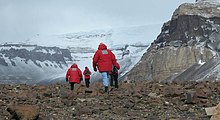
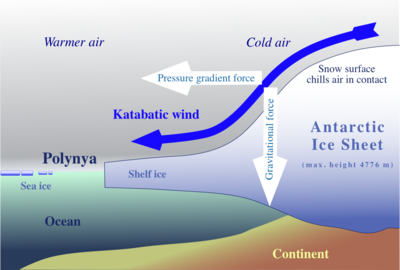
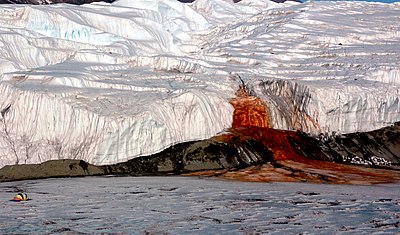



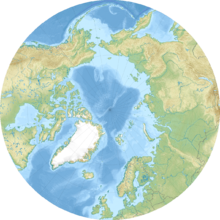



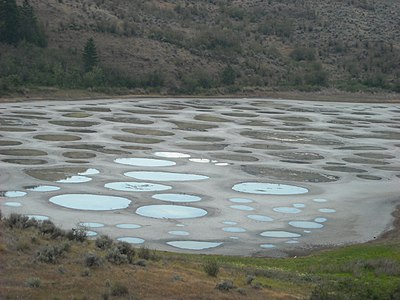

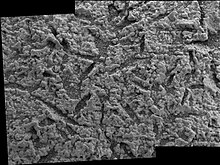




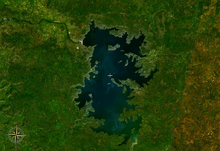





![Russian territory since 2014 on the globe, with unrecognised territory shown in light green.[a]](https://upload.wikimedia.org/wikipedia/commons/thumb/5/5e/Russian_Federation_%28orthographic_projection%29_-_only_Crimea_disputed.svg/250px-Russian_Federation_%28orthographic_projection%29_-_only_Crimea_disputed.svg.png)


